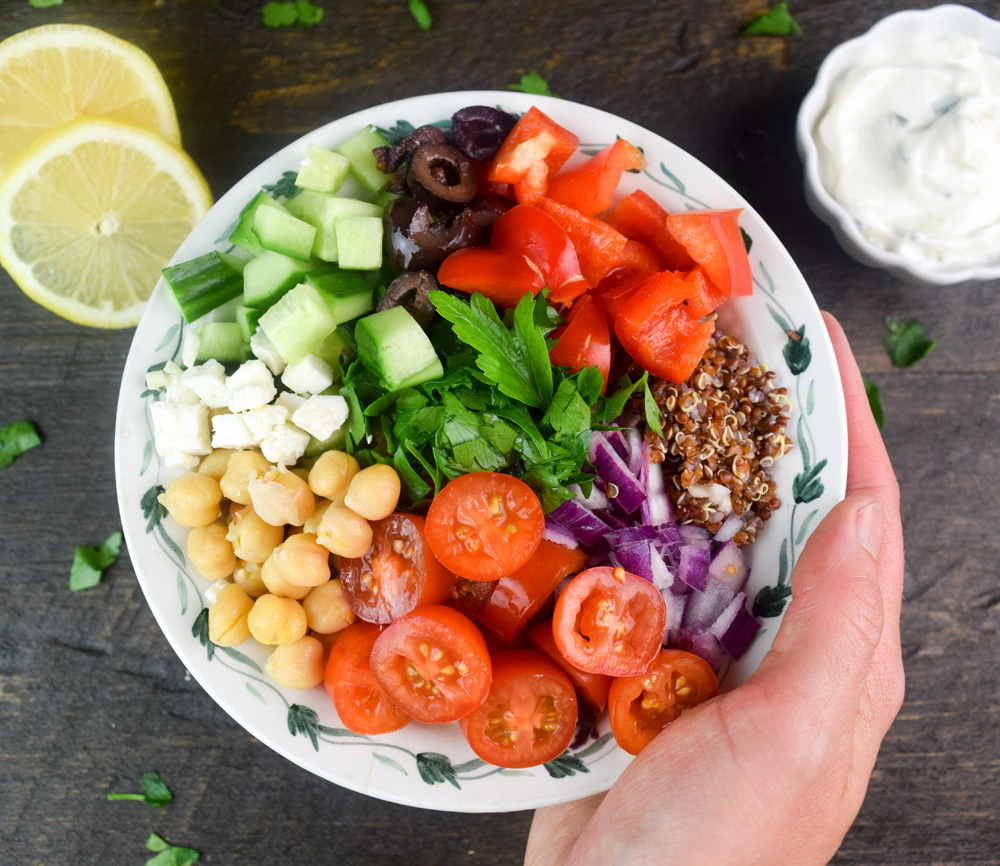
Quinoa is one of those foods that we often hear about. You may have heard the phrase: “Replace your rice with quinoa, it’s healthier” or “Choose quinoa, it’s a more complete grain”? But why these claims? What gives quinoa such a good reputation? Let’s explore the properties of this remarkable pseudocereal.
Is quinoa a cereal?
Biologically speaking, quinoa is a pseudocereal. Like cereals, a pseudocereal is a plant that produces seeds suitable for consumption but is not a member of the grass family. It is native to the Andes Mountains in South America. It has been cultivated for more than 5000 years, mainly in Peru and Bolivia. Its production has gained in popularity since 2000 and is currently grown in more than 50 countries, including Canada. It is characterized by its sweet flavor and its nutty, slightly bitter taste. The red and black beans have a slightly firmer texture and a slightly more pronounced taste than the white ones.
Why choose this grain?
True grain or not, the nutritional properties of quinoa are no less impressive! It is a satiating grain that offers complete proteins. In other words, it provides all the essential amino acids for our body. It is also a concentrated source of dietary fiber. These fibers help manage cholesterol, reduce the risk of developing cardiovascular disease and lower the risk of certain cancers. Finally, it contains antioxidants that protect us from cellular damage.
In practical terms, 1 cup of cooked quinoa provides 8g of protein and 5g of dietary fibre! It contains several B vitamins, iron, phosphorus, manganese and one third of an adult’s daily requirement of magnesium! All these vitamins and minerals contribute significantly to energy production, blood cell synthesis and nervous system function. Moreover, for people who suffer from gluten intolerance, this grain is an excellent choice since it is naturally gluten-free.
How to prepare quinoa?
Quinoa is a very versatile grain! It’s easy to add to a comforting winter dish or a refreshing summer salad. It cooks in just 12 minutes and requires no soaking time. Simply rinse well before cooking. It pairs well with Middle Eastern spices, Mediterranean and Oriental flavours, fresh herbs, and citrus.
In supermarkets, you can buy whole grains, flakes, puffed grains or quinoa flour, depending on the intended use.
- The whole grain replaces rice, couscous, or pasta in your favorite dishes (salads, stews, curries, pilafs, etc.). It can be used as a stuffing for stuffed peppers and meats or incorporated into Poke bowls, Buddha bowls or burritos.
- Flakes can be used to make oatmeal and baked goods (muffins, breads, nature bars, cookies).
- Puffed grains are often found in commercial cereals or added to granola bars.
- Finally, quinoa flour is used in baking and in the production of pasta.
Below are examples of recipes that feature this remarkable pseudocereal. To learn more about different foods and their nutritional properties, don’t hesitate to consult a nutritionist.

Great recipes
- Coconut Granola – Ultime Fit
- Asian Quinoa and Edamame Salad – Ultime Fit
- Mediterranean Quinoa Bowl – Ultime Fit
- Quinoa Salad with Halloumi by Geneviève O’Gleman (French only)
- Quick Quinoa & Veggie Casserole – Cookspiration, Dieticians of Canada
- Nutty and Fruity Quinoa Salad with Maple Vinaigrette – Cookspiration, Dieticians of Canada
- Chocolate Raspberry Quinoa Pudding – Cookspiration, Dieticians of Canada
- Mediterranean Breakfast Quinoa with Walnuts, Figs and Apricots – Whole Grains Council
- Quinoa-Stuffed Peppers – Whole Grains Council
Sources
- Freer, C. (2013). Supergrains, eat your way to great health: Guy Saint-Jean, editor.
- Oldway Whole Grain Council, Quinoa March Grain of the Month. (2023).
- Radio-Canada, Plateforme Mordu, Quinoa. (2023).
- Dietitians of Canada, UnlockFoods.ca, All About Quinoa. (2017).
- Nautilus Plus, UltimeFit Platform, Recipes. (2023).
Quinoa: A remarkable grain to discover! is a post from Nautilus Plus. The Nautilus Plus blog aims to help people in their journey to fitness through articles on training, nutrition, motivation, exercise and healthy recipes.
Copyright © Nautilus Plus 2023

A session with a nutritionist will help you on your way!

Let's establish your nutritional goals together and get some expert advice!
Discover our nutrition services
